Title : Development and validation of a diagnostic prediction model for neonatal sepsis in a low-resource setting
Abstract:
Background: Neonatal sepsis remains a major cause of preventable neonatal mortality globally, yet diagnosis remains difficult in low-resource settings due to the inaccessibility and the long turnaround time of blood culture. Clinical prediction models can support the early detection and management of sepsis.
Objective: To develop and internally validate a diagnostic prediction model for the diagnosis of neonatal sepsis in a low-resource setting, Ethiopia.
Methods: An institution-based cross-sectional study was conducted from January 2022 to December 2024. We collected data through medical record review among 607 newborns with suspected sepsis. Predictors were selected using the least absolute shrinkage and selection operator (LASSO) and then subjected to multivariable logistic regression. Model performance was assessed by discrimination and calibration. Ten-fold cross-validation was performed to assess the model’s internal validity, and clinical utility was assessed by decision curve analysis. External validation was not performed. The R statistical software was used for data analysis.
Results: The proportion of sepsis was 36.1% (95% CI: 32.3, 39.9). The final model incorporated maternal anemia, fever, antibiotic use during pregnancy, temperature abnormality, presence of a focus of infection, invasive procedure before admission, leukocytosis, leukopenia, and thrombocytopenia. The model demonstrated an area under the receiver operating characteristic curve (AUROC) of 0.87(95% CI: 0.84, 0.90) and good calibration. The model achieved a sensitivity of 86.8%, specificity of 71.1%, negative predictive value of 90.5%, and a positive likelihood ratio of 3.0. The decision curve analysis showed a higher net benefit than the "treat-all" or "treat-none" strategies.
Conclusions: We developed a diagnostic prediction model for neonatal sepsis, demonstrating good discrimination, high sensitivity, and negative predictive value, with a modest positive likelihood ratio, reflecting its utility for ruling in or out sepsis. The model can be incorporated into routine neonatal care practices and quality improvement initiatives following external validation.
Keywords: Sepsis, Neonatal Mortality, Antimicrobial Resistance, Prediction, Diagnosis, Ethiopia.



